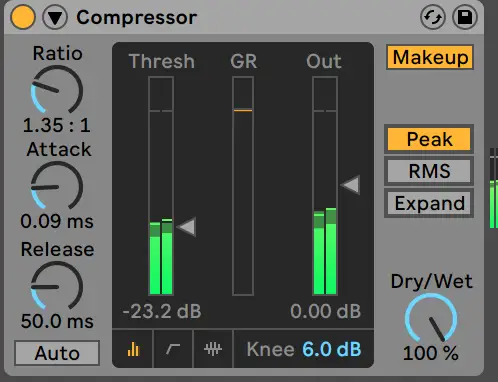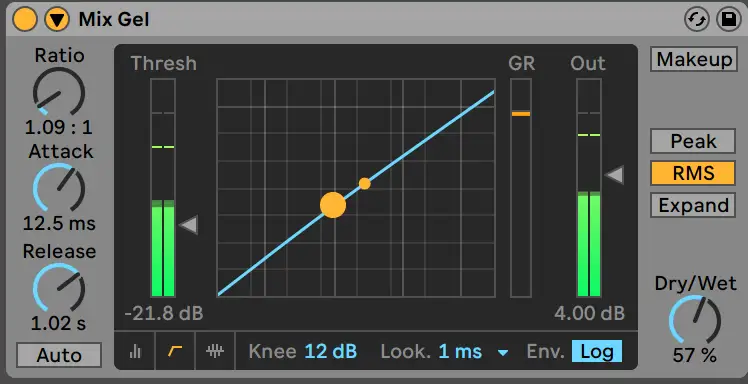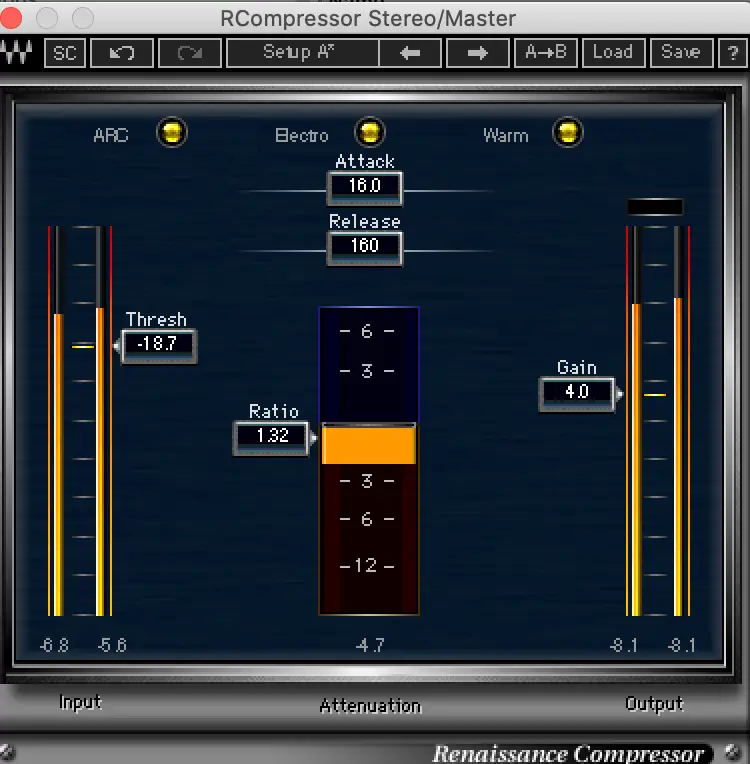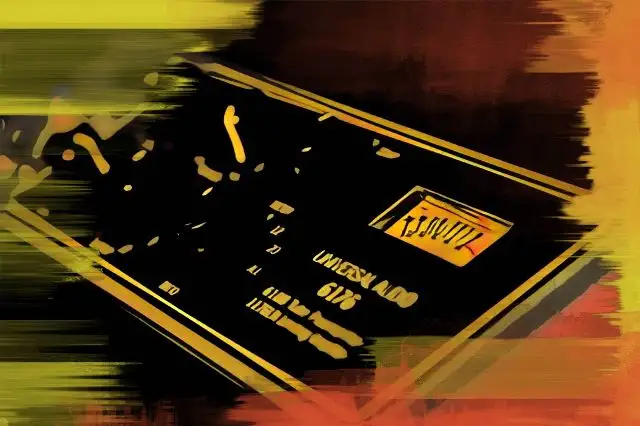Audio compression is one of the most common components of the audio recording process, but what is a compressor, anyway? If you don't know, don't worry! You're certainly not alone.
Luckily, we've put together a guide on everything you need to know about audio compression to use it successfully in your songs. Below, we'll define the different use cases for audio compressors and help you identify when it makes the most sense to opt for a compressed signal over a clean one. Let's jump into it!
What Is An Audio Compressor?
An audio compressor is a piece of audio equipment, either a virtual plugin or hardware piece used to reduce the distance between the quietest and loudest sounds within a track. Sound reduction as a result of a compressor is referred to as gain reduction, and adding sound back in is referred to as makeup gain.
Compressors come in several varieties and are used at nearly every part of the music production process, making them an invaluable asset for any musician.

How Do Audio Compressors Work?
Audio compressors work by reducing the dynamic range of a processed track. Dynamic range is the distance between the quietest and loudest parts of an audio track. When audio is compressed, the most quiet parts are amplified, while the loudest parts are de-emphasized.
The result is a more balanced piece of audio with more consistent leveling across the processed track. Compression can also introduce or highlight certain frequencies that weren't previously as obvious. In this way, compression can be used to add character or even useful "noise" to processed tracks.
Still confused? Watch what happens to audio waves in real time when they're compressed:
When Do I Use An Audio Compressor?
So, when do you tend to use an audio compressor? Here are four of the most common scenarios where using an audio compressor makes a lot of sense:
Reducing Dynamic Range
The main reason anyone uses audio compression is to reduce the dynamic range of an input signal. Fully compressed tracks are easier for listeners to digest, and help create space for additional frequencies across a mix. Compressors are especially important when recording live, unpredictable sounds like vocals that are more likely to have unsteady input and output levels.
Sidechain Compression
The sidechain compression effect is used to help create space to help highlight certain instruments against one that occupies a similar frequency range. For instance, the bass guitar and kick drums commonly take up a lot of low end frequencies whilst playing at the same time.
In order to help the kick drum stand out against the backdrop of the low electric bass, we can sidechain the kick to the bass, so that the bass part ducks every time the kick is played. This way, we can efficiently hear both the kick and bass without muddying up the entire song.
Adding Color
Compressors can bring out sound and potentially add noise of their own to the output gain of a processed signal. Certain compressors are used to add color and flavor to individual audio tracks or entire mixes, especially compressors like tube compressors which are designed to emulate older, signature hardware equipment.
Shaping The Sound
Compression can be used for fine tuning or shaping waveforms that might otherwise sound unruly or inconsistent. For instance, it's super common to compress all drums parts like the hi hats, kick and snare drum to shape the transients equally. Rounding off drum parts is key to making them sound good and not over-pronounced across the entire mix.
Parallel Compression
Parallel compression, sometimes called New York compression, is the process of blending an uncompressed signal with a fully compressed signal. Having this extra degree of control produces a unique sound and can make it easier for engineers to get the blend of compression they're looking for.

Understanding The Parts of a Compressor
There are several main components within the compressor itself. Here are the different toggles you'll come across in nearly every compressor:
Attack and Release
Attack and release settings determine how fast a compressor applies compression and releases it after the signal has past through. A fast attack time will compress the signal immediately, while a slow attack time is more gradual. Fast releases create more punch, clamping down on the audio signal and letting it go fairly quickly. A slower release time holds on for longer, creating a more consistent wall of sound.
Ratio
Ratio determines the strength or intensity of your compressor. In most cases, you should shoot for the lowest ratio possible to get the dynamic range control you need. This is because overcompressing your signal can take out dynamics that add character and life into your mix - it's important to find a sweet spot between the two.
Threshold Level
The threshold or threshold level determines at what point your compressor springs into action. The lower your threshold is, the more compressed your signal will be, since your compressor will jump in at the minimum level set by your threshold.
Soft Knee vs Hard Knee
The "knee" of a compressor determines the slope of your compressor. The harder the slope, the more compressed your signal sounds. A hard knee creates more obvious compression while a soft knee is gentler by design.
Makeup Gain
This level measures how much the output gain is increased to bring back amplitude to a process signal. For instance, compression that produces a lot of gain reduction will need more makeup gain to compensate for the lower perceived volume level.

Common Types of Compressors
There are too many types of compressors to name individually, but generally speaking, compressors fall into one of the following categories:
VCA Compressors
Voltage control amplifier compressors use a control signal as a reference to determine the desired level of applied compression. These types of compressors are highly predictable and customizable with dedicated attack, release, threshold, ratio, and knee knobs.
Tube Compressors
Tube compressors use vacuum tubes to control the dynamics of a piece of audio. The tube sound has a slower attack time, and won't overly compress your mix. Tube compressors are great for keeping your transients in tact while lightly shaping the signal.
FET Compressors
FET compressors, or field effect transistor compressors, use transistor circuits to determine the level of gain reduction. These compressors are known for being incredibly fast, with ultra-quick attack and release times. That being said, overuse of a FET compressor can introduce a bit of noise, which can be manipulated to build saturation or artful distortion.
Optical Compressors
So many of your favorite songs have probably used the Teletronix LA-2A as a part of the signature vocal chain. This compressor is a special case, falling under the category of optical compressor, or opto for short.
As you might have guessed by the name, these compressors emit an internal light that shifts based on the input level of the signal. This light communicates levels to a resistor, which then informs how much compression is applied to input signals. These specialized compressors do not have attack and release controls as the level of compression is determined solely by the uncompressed signal.
PWM Compressors
These compressors have sharp attack and release times and have been tactfully used across generations dating as far back as the 60s. The name, which stands for pulse width modulation, refers to the compressor's technique of separating audio using high frequency pulses to determine which parts should be emphasized or minimized.
Audio Compression FAQ
Are you still unsure about when to use audio compression? Use these commonly asked questions and answers to help expand your understanding as a producer or audio engineer:
When should you compress audio?
You should compress an audio signal whenever you're trying to reduce the dynamic range of a piece of audio. Dynamic range compression shortens the distance between the highest and lowest amplitude across a signal chain, creating a more balanced, consistent sound.
Why do we need audio compression?
Audio compression helps quality audio files sound smoother, especially when tracks are prepared for certain types of standardized outputs like streaming platforms.
What is a limiter?
You can think of a limiter as a high powered version of a compressor. Limiters provide excessive compression to add the final compressed touches to a master mix.
Why does compressed audio sound better?
Compressed audio tends to sound better since it evens out the audio signal by decreasing the dynamic range of the output signal. Our ears prefer to hear a consistent level of sound which is best achieved with the help of compressors.
Does compressed sound better?
Compression lessens the gap between the loud and quiet parts of an audio file which can help a track sound more consistent, and to some, better. However, overcompressing an audio file can take away all of a track's dynamics, leading the processed signal to sound flat.
Audio compression is an essential process that every musician will come across at some point in their careers. Hopefully, this guide serves as a resource to showcase the differences between uncompressed and compressed sounds so that you can use compressors as effective tools. Enjoy exploring the power of compressors!





